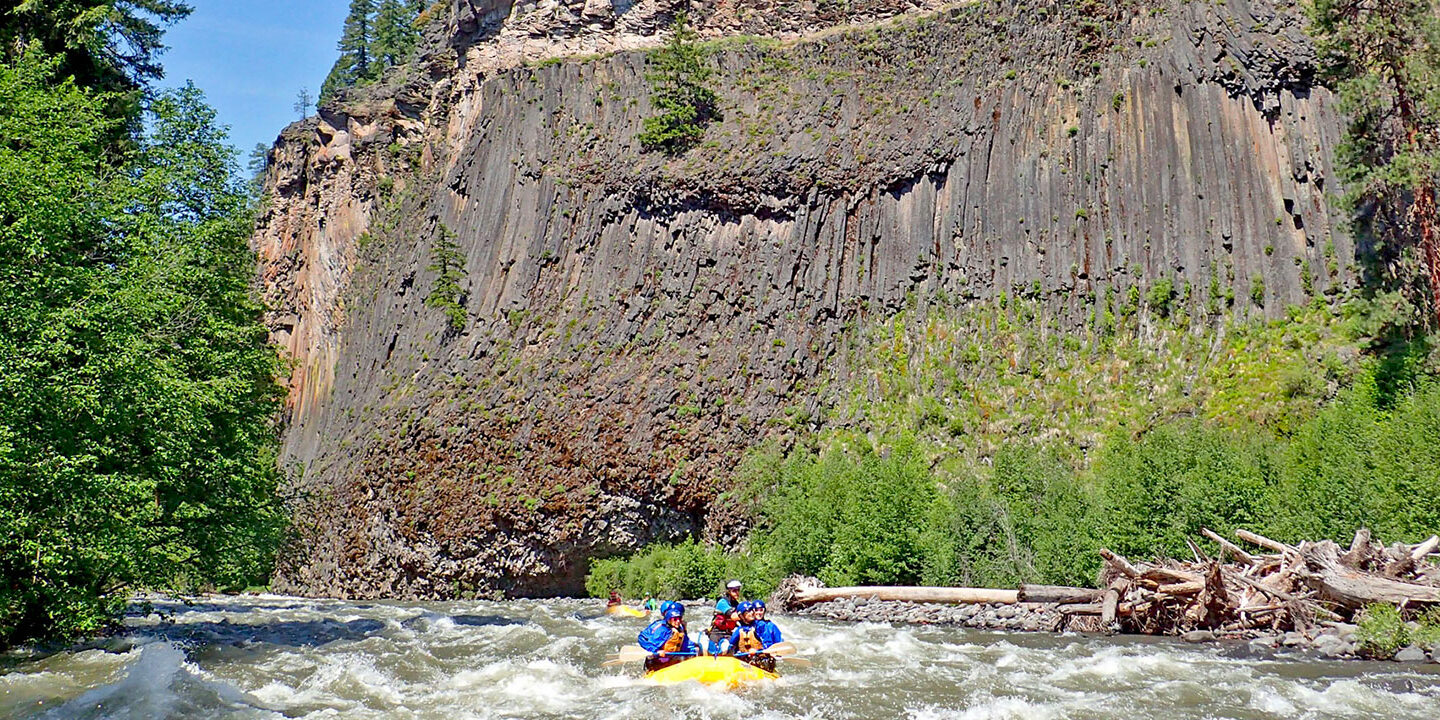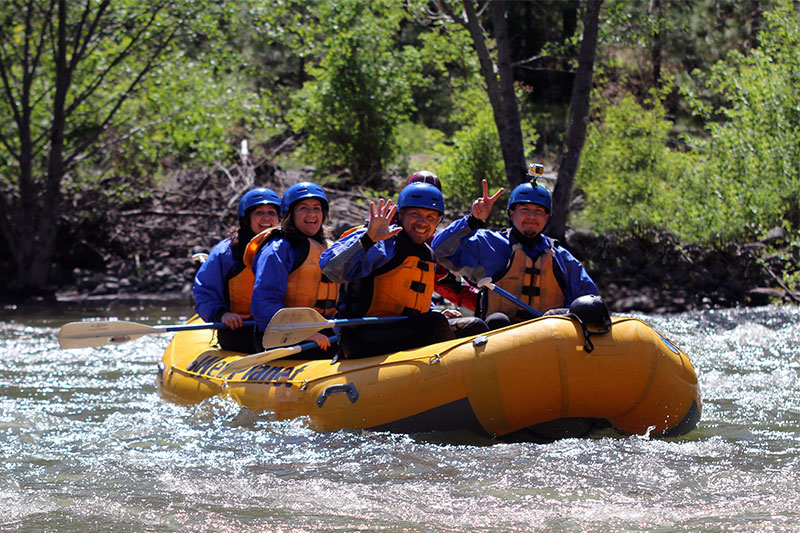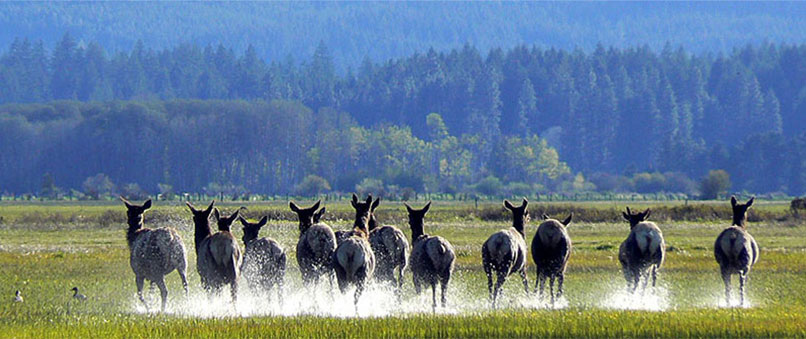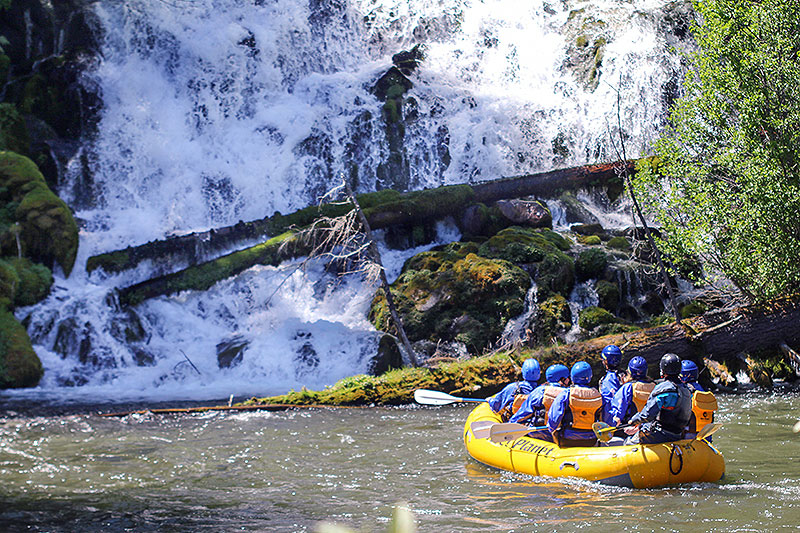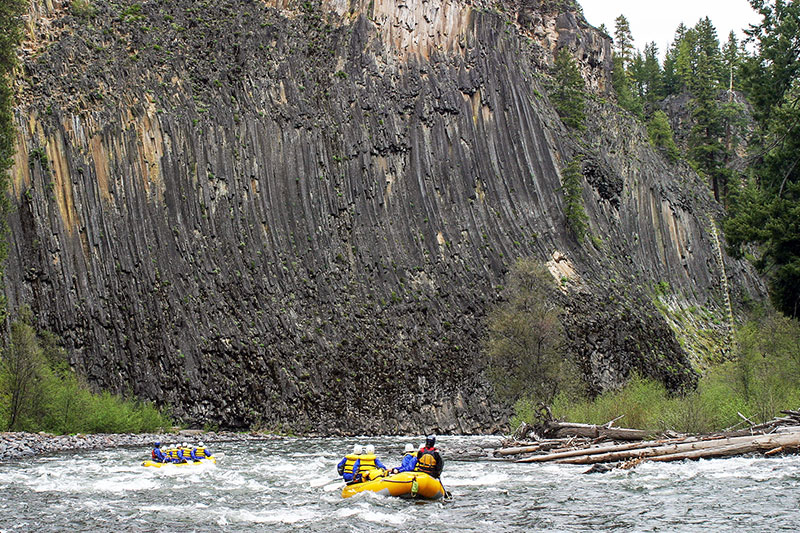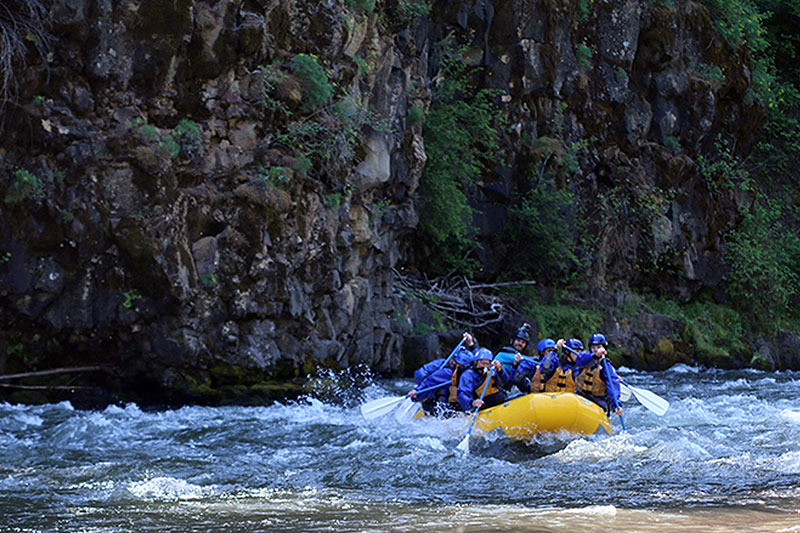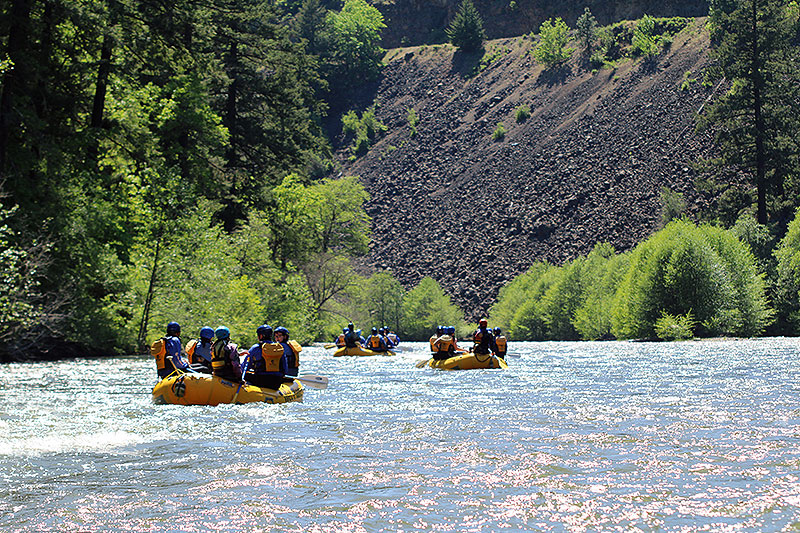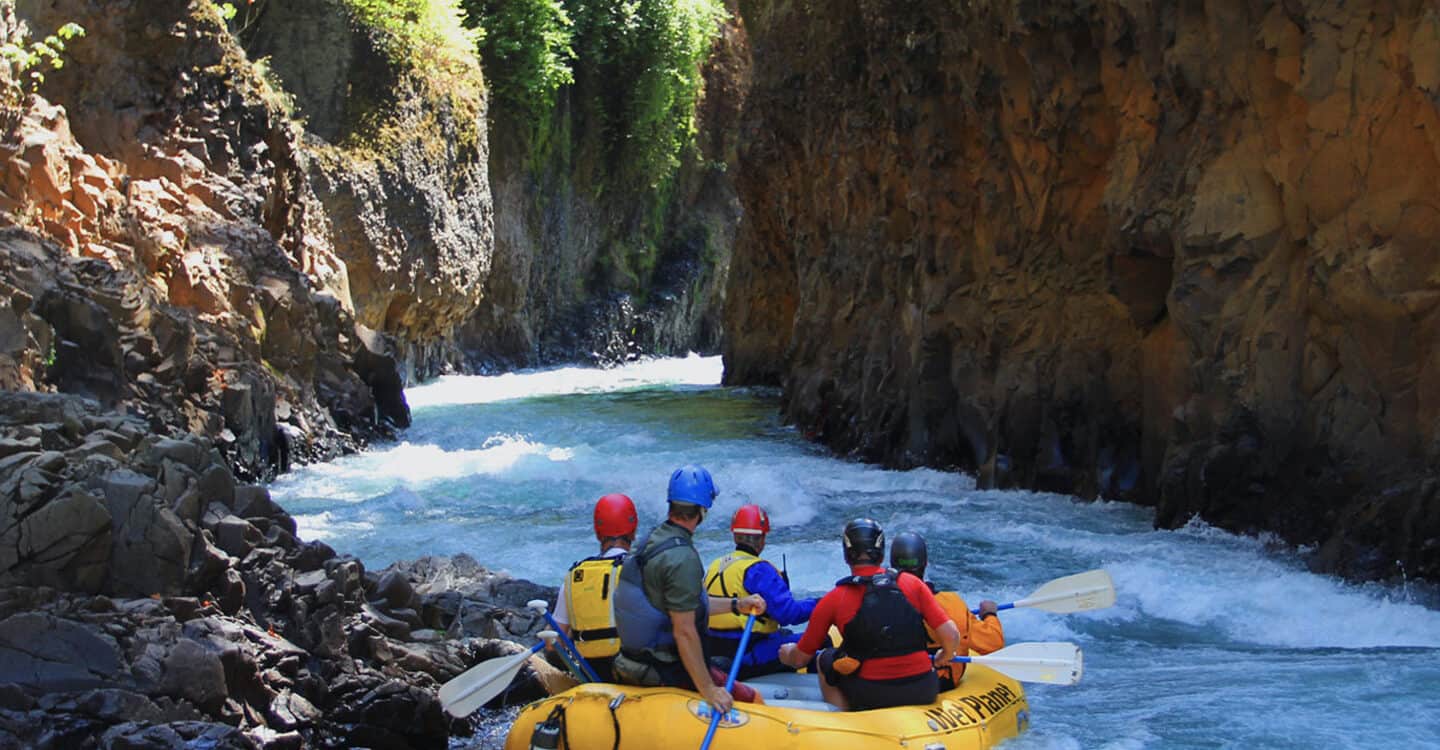Rivers are the thread that stoically and silently hold sections of an area’s natural history story together. During the spring, the Klickitat River begins to rise. Gathering the run-off from increased rain showers and melted snow from the snow-capped Mt Adams, this wilderness run comes alive. However, the pieces of story that the Klickitat links together are far different from any other whitewater rafting run in the Columbia River Gorge. While the Klickitat shares glacial flow with other spring classics, like the White Salmon River, it flows through an entirely different ecosystem. Continue reading for a virtual journey down the Klickitat River, or raft with us this spring to see it in person!
Journey to the Klickitat River
After departing from Wet Planet, we cross over the White Salmon River on the way to the put-in, beginning our drive into the eastern Cascade desert. With every mile we travel to the east, we lose an inch of rainfall per year. For us, this amounts to a 30 in/year difference in rainfall from our base in Husum. The road climbs until Mt. Adams pops into our view. The land has spread out, creating a vast marsh-lake, the central feature of the Conboy Lake National Wildlife Refuge. Since 1964, the area has provided safe habitat for endangered species like the Sandhill Crane and Spotted Frog. Our van pauses to view the herd of elk, numbered in the hundreds, grazing next to the marsh. Conboy Lake will eventually make its way to the Klickitat River, although not until the dry summer comes.
We continue our journey, and the winding dirt roads soon lead us to the river put-in at the Glenwood Gauge Station. We are now nestled deep in the Yakima Indian Reservation, with the Gifford Pinchot National Forest just to our left. Sitting on a fallen tree, the rafters listen intently to Todd’s description of paddling technique. They may not know that the massive log beneath them fell on its own accord. Harsh winds and storms can bring down some of the tallest trees with one snap. Coupled with local logging efforts, the Klickitat River is known for its dynamic forest environment. By dynamic, I mean there are fallen trees everywhere – including in the river. We, of course, have scouted the section of river prior to the trip for any obstacles that may have shifted over the winter months. Guides remember several crucial moments when the river splits to lead rafting guests down the smoothest passage, clear of fallen logs.
Rafting the Klickitat River
Soon after launching, we see our first steep canyon wall. Suddenly we feel smaller, now floating through a massive canyon. Guides explain the columnar basalt rock walls, formed from ancient eruptions of Mt Adams and other major geologic events. These walls continue to appear around river bends, each more amazing than the last. Distinct layers appear in the rock walls, as if the mountains were sliced in half for us to see the story hidden inside.
Our rafts ride over fun continuous wave-trains and spin on eddy currents, making this scenic wilderness tour even more exciting. Side creeks tumble into the main river, often falling from steep rock outcrops all the way into the Klickitat. Each of these rivers connects a smaller canyon to the main branch, linking together another section of the natural masterpiece.
After a warm lunch of chili and bread bowls, the Klickitat River canyon begins to open. Sweeping views of the landscape provide a wider perspective of the land around us. It is not until we are driving away at the end of our whitewater rafting trip that we see other people. For the past several hours, it has only been us and the river.

Guide Ethan interpreting the natural features of the canyon for Wet Planet rafters
We make our way out of the canyon, passing back into the wet ecosystem of the White Salmon valley. Whether our guests realize it or not, they have just passed through an area that very few people see; a magical journey that can only be experienced a couple of months out of the year when the water levels are just right. Join us on a full-day trip down the beautiful Klickitat River this spring to experience this mesmerizing place firsthand!
Author Susan Hollingsworth writes for Wet Planet Whitewater, Canoe & Kayak Magazine, American Whitewater, and any other river-related publication she can find.

